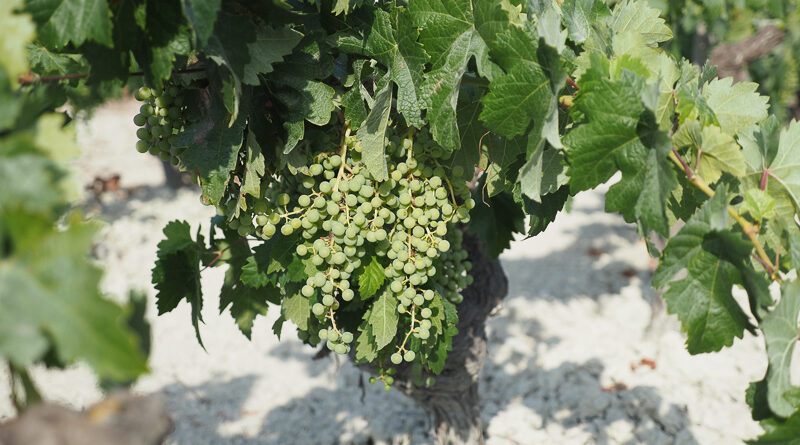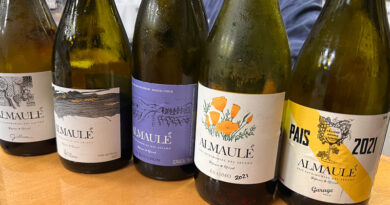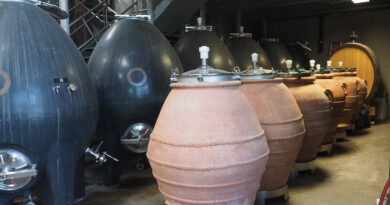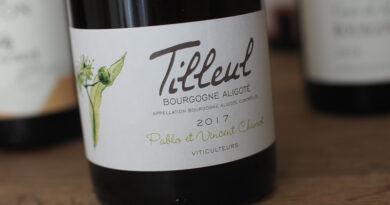An ode to Palomino: still wines made from old vine Palomino offer a new narrative for this ‘neutral’ industrialised yet historic grape variety
Lisse Garnett gathers evidence for the defence and tastes with Jamie Goode
Palomino Fino, Listan Blanco, Listán de Jerez, Malvasia Rei, Fransdruif, Listrão and White French are all names for Palomino, the grape most associated with Sherry. Today a good clutch of producers make exceptional still wines from Palomino – intriguing bottles that have enraptured the palates of wine nerds seeking soulful depth and meaning in the bottom of their careworn glasses. Despite being sought after, they are not yet overpriced, and offer a fascinating tasting experience for the weary well-travelled palate.
With a reputation for being fat, flabby, low in malic acid and sugar, easily oxidised and prone to mould, the staple of the Sherry triangle, Palomino Fino, has oft been used and abused. A reliable work horse – even dry farmed it can produce large yields in hefty loose bunches – it is principally found in warm regions. The Canaries, California, South Africa, Portugal, Australia and Argentina all have significant (if ever reducing) plantings. This variety has lost ground and respect, but when precisely planted and understood, it is capable of magnificent complexity and a superbly sensual palate. In the right hands this grape can be sublime.
Myth suggests the grape was named after a knight who served King Alfonso X, named Fernán Palomino who was gifted land for service. What is undisputed is its affinity with white albariza soils and flor ageing. It also appears to have an extraordinary ability to convey terroir. Still wines made from this grape are not new: in the early 1800s, botanist Simon Rojas Clemente attempted to chart each and every type of grape vine growing in Spain. He listed some 119 varieties then used to make Andalusían table wines. Palomino featured among them. Only later did Palomino and Pedro Ximénez grow to dominate the region, thanks to the requirements of Sherry production.
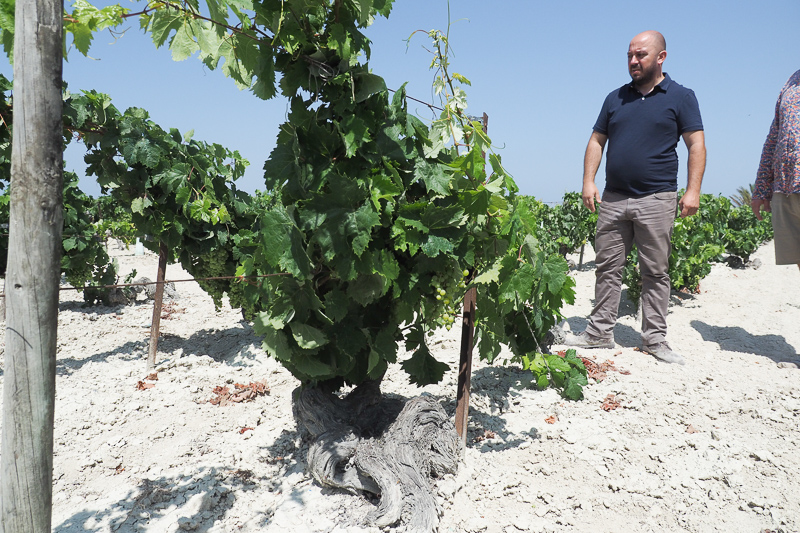
In the past biologically aged Sherries were commonly not fortified and the grapes needed to make it were grown on only the finest albariza soils, harvested in numerous tranches and sun dried on mats, a process called asoleo. As Jamie details in his article Recovering the magic of El Marco the harvest was measured in units called carretada – the amount one skilled worker could pick in a day – precisely enough for a single cask. Back then the vineyard or Pago really mattered, far more so than the branded producer but huge expansion of the region brought industrialisation, fortification across the board (the new high-yielding clones of Palomino didn’t reach high enough potential alcohol) and less notice was taken of terroir. Palomino grew a reputation for making neutral wines on which taste might be imprinted by utilising sophisticated and skilful wine making techniques.
Ramiro Ibàñez of Bodega Cota 45 is a firm advocate of old vine Palomino. He believes the variety has an expressive affinity with local marine-fossil-rich soils and clearly illustrates the incredible variations in terroir that exist in Sanlúcar de Barrameda and Jerez. Ramiro produces several still wines from a number of Pagos located above 45 meters above sea level where he understands the sweetest spot to be. The 100% Palominos he bottles are defined by Pago or single vineyard. His wines, Miraflores, Carrascal and Maina each hail from separate Pagos with contrasting characteristics. He ferments in used manzanilla barrels without temperature control. This avoids excessive fruity flavours. He attributes different textures, structure and roundness to the distinctions in soil type. Maina is grown on Tosca de Barajuelas (meaning the deck of cards), a soil rich with horizontally layered marine fossils, Carrascal on pure chalk and sand known as Lentejuelas and Miraflores, a mix of iron rich Lustrillo and tough, mineral heavy Tosca Cerrada. Jamie’s notes follow below.
Many plantings of Palomino in new world countries were made with a view to ‘sherry’ production, dating back to a time when fortifieds were a more important part of the wine landscape in these countries. For example, Palomino was one of the varieties planted when the Marlborough wine region in New Zealand was established in the mid-1970s, although there’s none left there now.
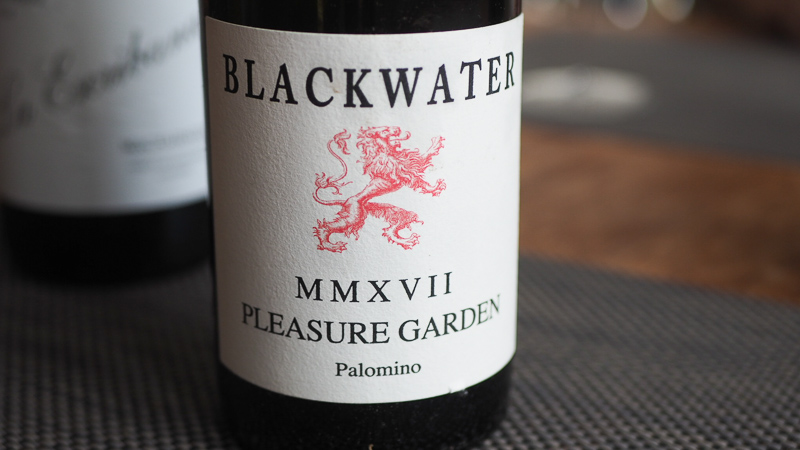
Named Fransdruif or White French, it made its way to South Africa in the 1920s, most probably to act as a reliable workhorse for brandy production. Today old vines are prized by some who have found the mere 81 surviving hectares of South African old vine Palomino far from neutral but instead fruit forward and luscious. Francois Haasbroek of Blackwater Wines makes a Palomino from 90 year old vines in Robertson that he happened on by pure chance. He says the older vines, naturally restrictive in their output, develop more character. He produces between 1600 and 2000 bottles and year but thinks the variety will become progressively more marginalized despite the popularity of his wines. He says it’s fundamental that winemakers like him pay the farmers enough to keep these old vines in the ground. Adi Badenhorst is also a fan: he makes Sout Van de Aarde, 100% Palomino grown on limestone soils in miniscule amounts. Harvested from the West Coast in close proximity to the ocean, this too expresses saline qualities. Eben Sadie uses old vine Palomino grown on chalk soils in the coolest part of Swartland for his field blend with Chenin, Skerpioen White, one of his much admired Old Vine Series.
One of the most popular affordable wines in Spain is also made with 100% Palomino grapes. Barbadillo Castillo San Diego costs as little as four pounds.
This clutch of wines yielded mind blowing results with Jamie selecting one example as a candidate for his stand-out wine of the year thus far. His notes follow. I think we might safely say the case for Palomino being neutral is dismissed.
THE WINES
Blackwater Pleasure Garden Palomino 2017 Robertson, South Africa
11.5% alcohol. From a block planted in 1927, Francois Haasbroek makes 1500 litres of this profound wine, which is named after Hitchcock’s first movie, released in 1927. It is pressed to concrete egg and then doesn’t move, and is bottled straight from the egg. Detailed, spicy nose with tangerine, lemons and herbs. The palate is fruity and expressive with some apple and lemon, and lots of spiciness. It’s almost peppery. It has a gentle personality and seems easy and fruity, but then there’s toast, honey and spice on the finish giving a bit of complexity. Finishes with grapefruit. Such a distinctive wine with some grapefruit and a lovely salinity on the finish. Such an ethereal, detailed wine. 95/100 (£24 Vincognito)
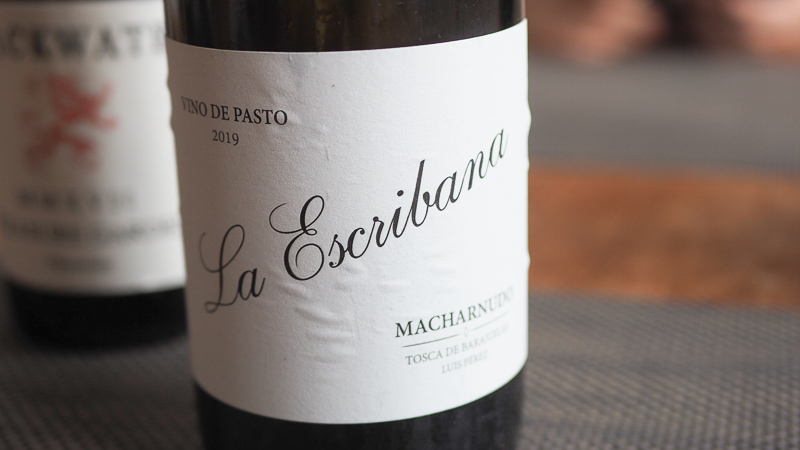
Bodegas Luis Pérez La Escribana Vino de Pasto Macharnudo 2019 Spain
14% alcohol. Picked in two stages, and then it’s aged under flor (Vino de Pasto refers to a wine that’s unfortified). A powerful, aromatic nose of spicy citrus, some peach and ripe pear, and nuts and honey, as well as some floral hints. The palate is concentrated, spicy and intense with a lovely balance between the sweet citrus fruit, the spicy underpinnings, and nice acidity. There’s also a saline, mineral twist that’s quite profound. A substantial, intense, bold white wine with so many layers of flavour. It finishes really taut, spicy and with an expanding acid finish. 97/100 (£23.50 The Sourcing Table, I declare an interest as contributing editor)
Bodega Cota 45 UBE Miraflores 2016 Spain
12% alcohol This is the entry level wine and comes from five vineyards. 9 months in vat with flor. Tight and focused with citrus fruit and some spicy notes. This has real focus, a lovely minerality and some fine spiciness. Saline, vital and pure. 95/100
Bodegas Cota 45 UBE Miraflores 2018 Spain
10.5% alcohol. With a keen acid backbone, this is a complex, vital wine showing spice, minerals and subtle nuts, with an amazing crystalline quality to the flavours. Bright lemony notes mix with some green apple, and there’s real length and intensity here. Zippy and alive, with a subtle flor quality – it doesn’t dominate at all. This is such a lovely wine. 94/100
Bodega Cota 45 UBE Maina 2016 Spain
14.5% alcohol. From Viña La Charanga in the Maina pago. Soils are Albarizas de Barajuelas, altitude 62 m. Fresh with a saline edge. This has lovely texture to the pear and apple fruit, with nice finesse and some richness. Such depth and focus with lovely texture. 95/100
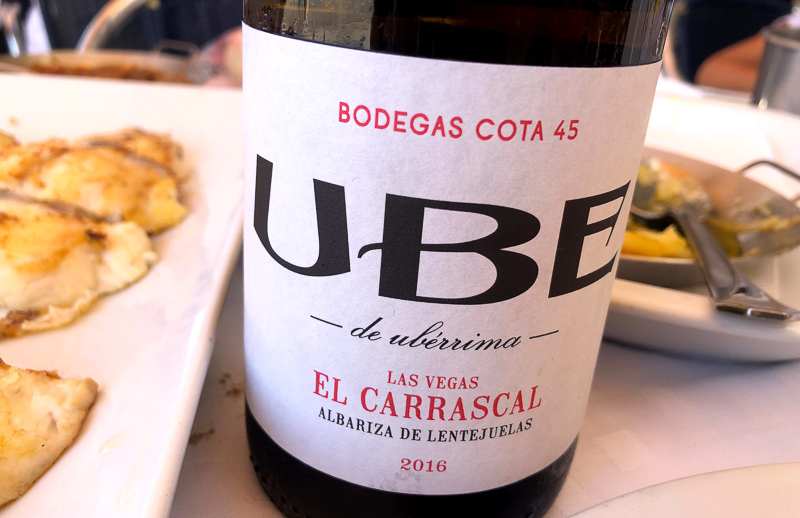
Bodega Cota 45 UBE Carrascal 2016 Spain
73% Palomino Fino, 16% Palomino de Jerez, 11% Palomino Pelusón from Las Vegas. This is taut, saline, intense and so fresh. Spicy with a mineral core. Some hints of petrol and smoke. Primary, bracing and vivid with astonishing length. Has texture, and a salty finish. 95/100
Arautava Finca La Habanera Listán Blanco Cordón Trenzado 2020 Valle de la Orotava, Tenerife, Spain
13.5% alcohol. Listán Blanco is another name for Palomino. Crystalline and precise with keen acidity. Lovely pure lemon and grapefruit fruit, with some stony, mineral notes and chiselled acidity. So fresh and detailed with amazing focus to the lemony fruit: the keen acidity is the backbone and there’s a slight saline finish which I really like. Has a grapefruit taper. 93/100
Muchada-Léclapart Univers 2018 Spain
Muchada-Léclapart are based in sherry country, but make still wines. And they are really good. 11.5% alcohol. Palomino, 20 year old vines, biodynamic, right by the coast in Sanlucar. Unfortified, no flor, in ceramic lined tanks. This is beautifully focused and mineral and saline with lovely precision. Very fine, fresh and salty with lovely mineral intensity. Such precision with a long finish. Has vitality. 94/100
Muchada-Léclapart Lumière 2018 Spain
12.5% alcohol. Palomino with a plot with a bit more aspect to it. 60 year old vines. Fermented and aged in 3 year old Bordeaux barrels. Such concentration here with a lovely mineral streak and notes of crystalline lemons, a slight salinity, and a bright acid line under everything. Has great concentration and precision. Layers of flavour here with great precision and purity. Really beautiful showing purity and minerality. 96/100
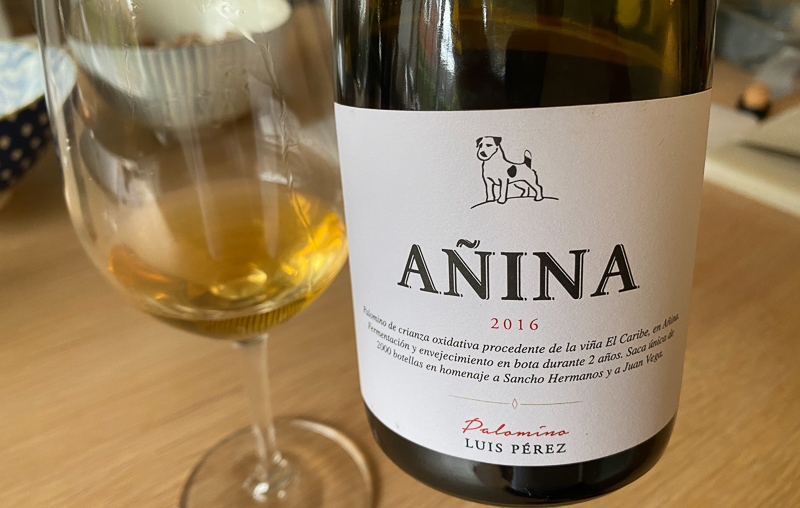
Bodegas Luis Pérez Añina 2016 Spain
15% alcohol. Comes in a 50 cl bottle. This is from the Viña El Caribe vineyard in the Añina Pago, and it’s made by Will Perez. The soil is the Tosca Cerrada albariza. 2016 was a warm vintage, and the result is a wine that defies traditional categories. It’s unfortified, after two days asoleo (drying of grapes on small mats) and then is fermented and aged in barrels for two years. So we have some tangy fino like notes, but also some rich oloroso-like flavours, with a touch of raisin. The nose emphasizes freshness, with nuts and spice, salty lemons, some seaweed and oyster shell, and also peach and quince. In the mouth there’s great concentration and finesse with a lovely salty trail weaving through rich honey, apricot and nut notes, with a lovely contrast between the fresh salty notes and the rich, exotically fruited characters. There’s some grapey richness and a hint of sweetness on the finish, which is more fruit than actual sugar. Quite a profound wine on many levels. 97/100 (UK agent Indigo Wine)

